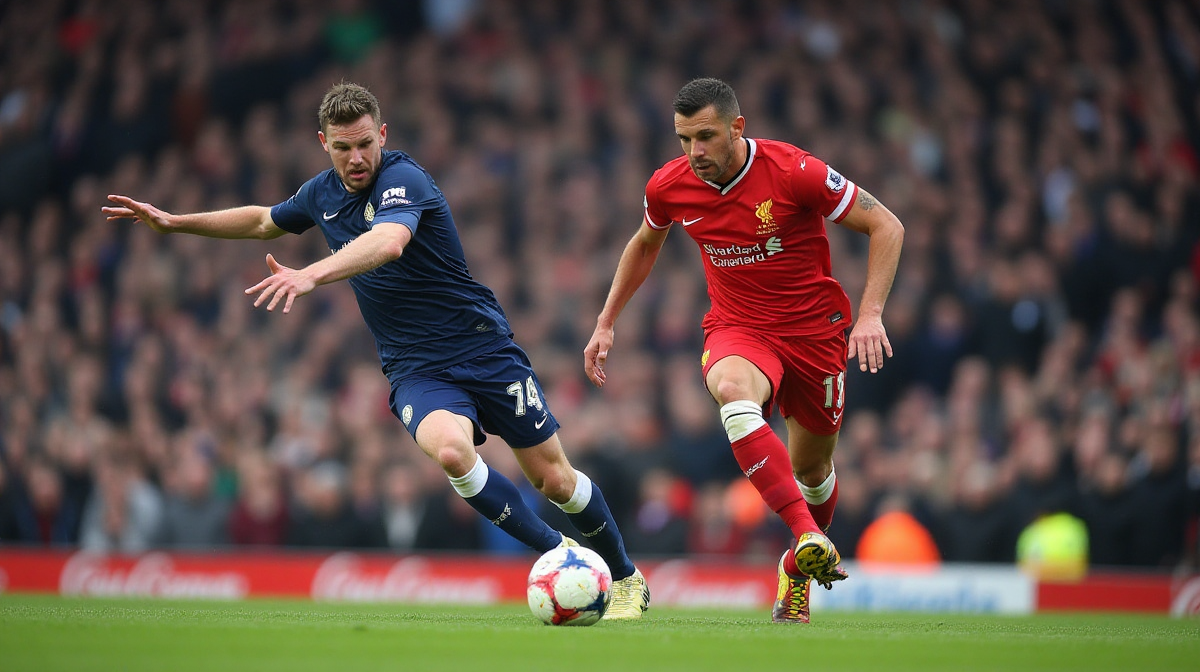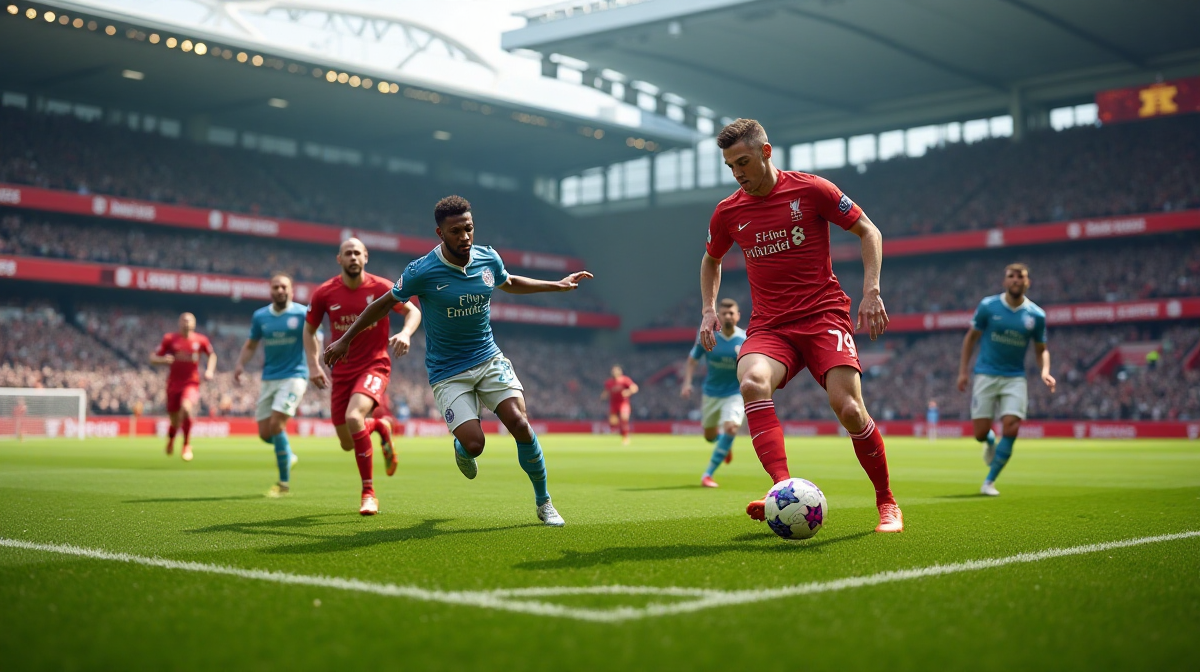Premier League Stats: 5 Key Trends
The Premier League is renowned for its intensity, unpredictability, and constant evolution. Analyzing premier league stats is crucial for understanding the league's current state and predicting future outcomes. The dynamic nature of the competition means trends are always shifting, requiring continuous assessment. This article will identify and analyze five key trends shaping the modern Premier League. Understanding these patterns can even influence informed decisions, such as navigating platforms offering insights, and even understanding the implications of an odd bet.
Trend 1: The Rise of Tactical Flexibility
The days of strictly adhering to rigid formations are fading. Modern Premier League football demands adaptability.
Shift Away From Rigid Formations
Traditional formations like the 4-4-2 and 4-3-3 are becoming less prevalent. Managers are increasingly opting for variable shapes – 3-4-3, 3-5-2, even asymmetrical setups – tailored to exploit opponents’ weaknesses. This isn't just about starting formations; it's about being prepared to change throughout the match.
Mid-Match Adjustments & In-Game Management
Proactive tactical adjustments during matches are now a defining characteristic of successful teams. Data analysis plays a pivotal role, informing decisions on substitutions, positional tweaks, and overall strategic shifts. Managers are scrutinizing live data to identify opportunities and counter opposition adjustments. Looking at patterns in substitutions, for example, reveals a manager’s preferred tactical responses. Navigating the complexities of football, and potentially even making an odd bet, requires understanding these in-game dynamics.
Impact on Player Roles - Hybrid Athletes
The demand for players who can perform multiple roles has increased dramatically. The modern footballer is no longer confined to a single position. Players must be comfortable drifting into different areas, contributing defensively and offensively, and adapting to the evolving tactical landscape. We're seeing a blurring of positional lines, with full-backs becoming wingers and midfielders dropping deep to support the defense.

Trend 2: Dominance in Possession – But with Increased Directness
Possession remains a cornerstone of many top Premier League teams, but the approach to possession is evolving.
Possession as a Foundation, Not the Goal
Top teams aren’t simply aiming to have the ball; they’re using possession to control the tempo, draw opponents out of position, and create goal-scoring opportunities. There’s a crucial distinction between sterile possession – passing the ball around without purpose – and possession with intent – probing for weaknesses and looking for the decisive pass.
Increasing Number of Progressive Passes & Carries
Data reveals a clear shift towards more vertical, attacking passes and dribbles. “Progressive passes” are defined as any forward pass that moves the ball closer to the opponent's goal, while “progressive carries” represent dribbles that advance the ball towards the opponent’s area. This indicates a willingness to take more risks and break lines with greater speed. Even considering an odd bet involves analyzing these forward-thinking plays.
Fast Breaks & Transitions Gaining Importance
Alongside controlled possession, quick counter-attacks following possession loss are becoming increasingly vital. Teams are developing the ability to win the ball back and launch rapid transitions, exploiting the space left by opponents committed to attack. Teams like Liverpool and Manchester City excel in this area.
Trend 3: The Growing Importance of Set Pieces
Set pieces are no longer an afterthought; they’re a crucial component of a team’s attacking arsenal.
Set Piece Specialists & Dedicated Training
Clubs are investing heavily in set-piece coaches and dedicated training routines. Statistical evidence demonstrates the growing contribution of set pieces to overall goal tallies. A well-designed set-piece routine can be the difference between a draw and a win.
Detailed Analysis of Set Piece Delivery & Movement
The delivery of set pieces (inswinging, outswinging, driven) is being meticulously analyzed, as is the movement of players both inside and outside the box. Intelligent runs, clever blocking, and precise timing are all essential.
Defensive Organization Against Set Pieces
Teams are constantly refining their defensive organization to neutralize set-piece threats. The debate between zonal marking and man-marking continues, with many teams adopting hybrid approaches. Successfully defending set pieces requires discipline, communication, and aerial prowess.

Trend 4: The Pressing Game – Evolution & Counters
The high-pressing game remains a prominent feature of the Premier League, but teams are evolving their approaches.
High-Pressing Systems – Intensity and Triggers
The “gegenpress” – winning the ball back immediately after losing it – is widely adopted. Metrics like Passes Per Defensive Action (PPDA) are used to measure pressing intensity. Successful high-pressing systems require intense fitness, coordinated movement, and clear triggers for initiating the press.
The Rise of Pressing Resistance & Building Through Pressure
Teams are improving their ability to play out from the back under intense pressure. This requires technically gifted players who are comfortable receiving the ball in tight spaces and executing precise passes.
Exploiting High Presses – Long Balls & Spaces in Behind
Teams are increasingly exploiting the vulnerabilities of high-pressing systems by using long balls over the top or quick passes into the space behind the pressing players. Identifying these weaknesses and capitalizing on them is a key tactical battleground. Understanding these tactics is useful when looking at today matches premier league.
Trend 5: Data-Driven Recruitment & Player Performance Analysis
Data analytics is revolutionizing player recruitment and performance enhancement.
Using Data to Identify Undervalued Players
Advanced metrics like expected Goals (xG), expected Assists (xA), pressures, and successful tackles are used by scouts to identify undervalued players who may be overlooked by traditional scouting methods. This allows clubs to gain a competitive edge in the transfer market. Even verifying details like an odd bet paybill number requires data accuracy, mirroring the need for precision in player evaluation.
Performance Analysis Tools & Player Feedback
Teams utilize video analysis and data visualization tools to provide players with detailed feedback on their performance. This allows players to identify areas for improvement and refine their skills.
The Future of Data in Football – Predictive Analytics
The future of data in football lies in predictive analytics – using data to forecast future outcomes and anticipate opponents’ tactics. This could revolutionize talent identification, match strategy, and ultimately, the outcome of games. The odd-bet market might even become more predictable with the increasing sophistication of these analytical tools.

